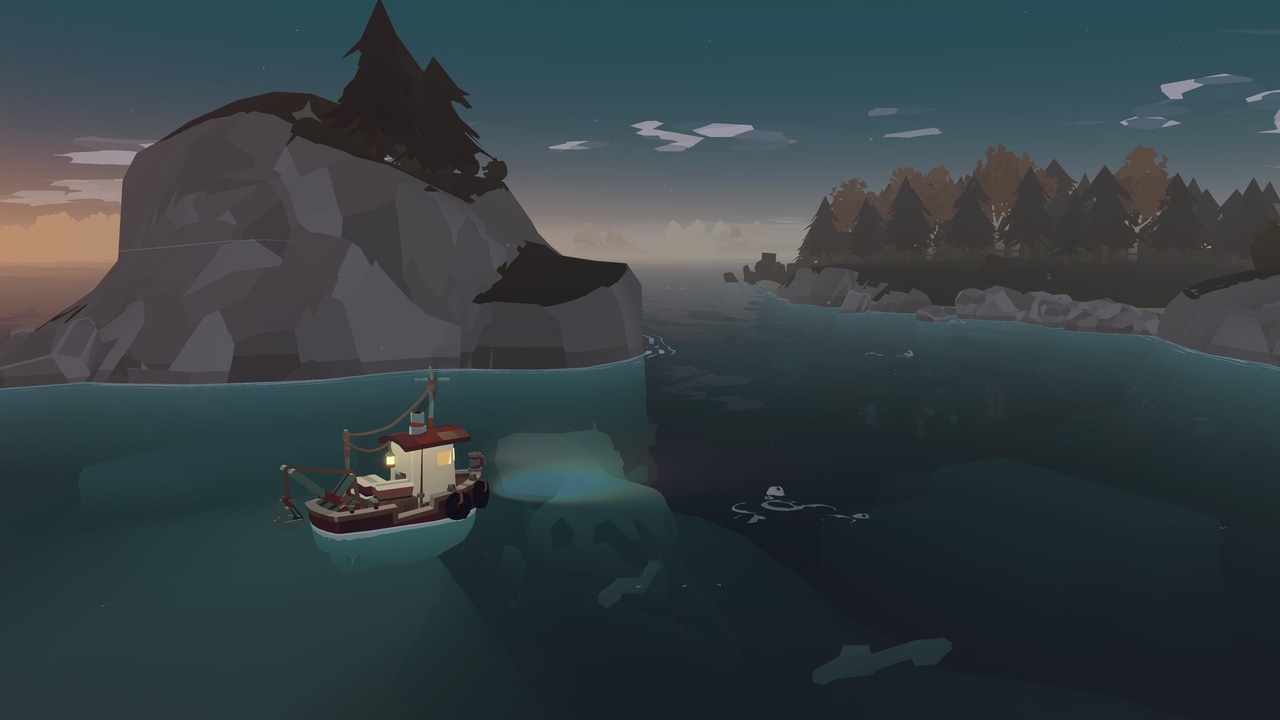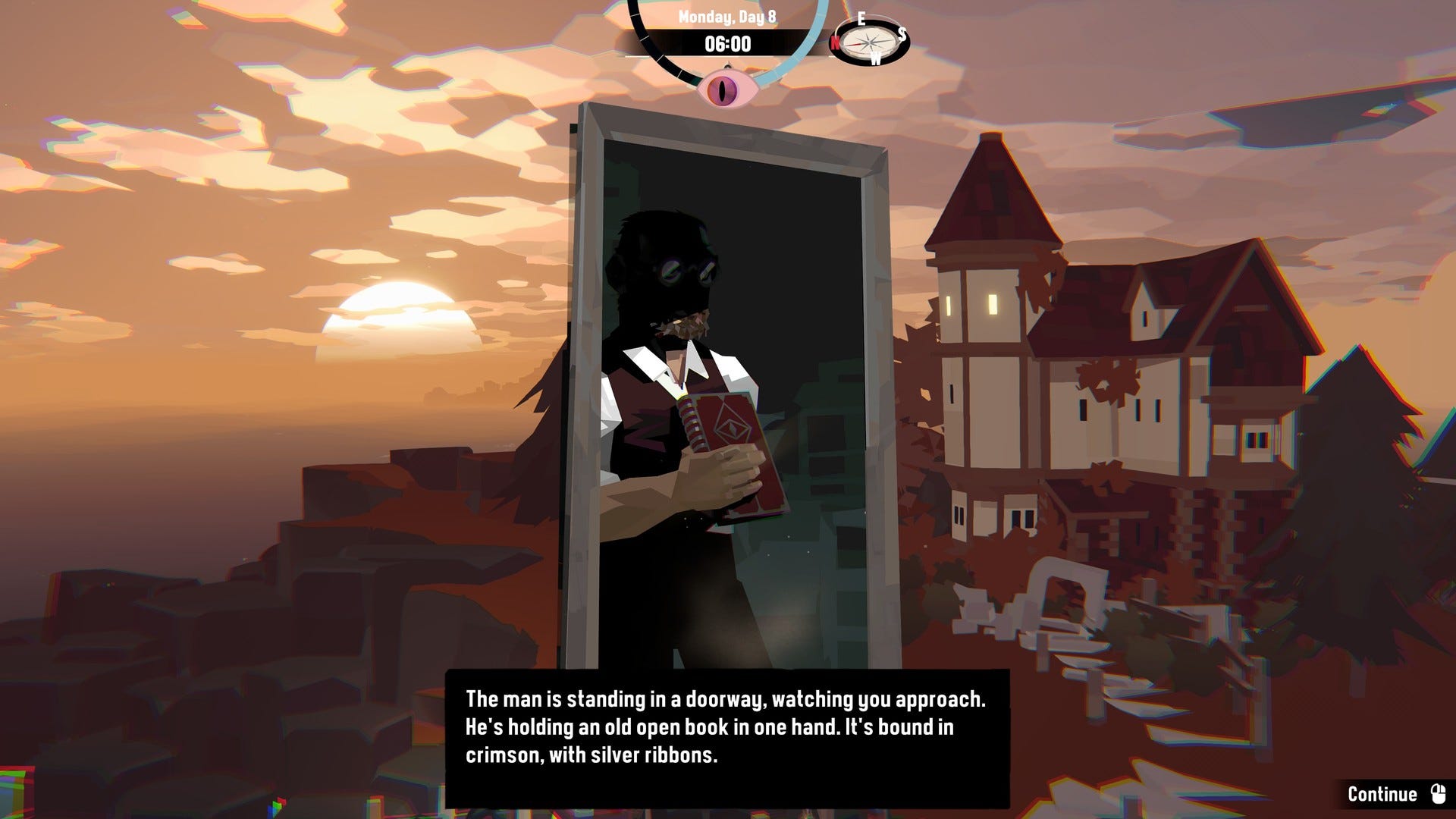
All images via Team 17
When New Zealand studio Black Salt Games began work on Dredge in 2020, they didn't think it was going to have much of a narrative at all. The team was tiny—with only an artist, programmer, and producer—so they were planning for the Eldritch fishing horror to be story-light.
"We can't really make a narrative game," read a quote by Dredge programmer Joel Mason on an early slide in the Dredge and Yarn Spinner: Building Narrative with Open Source talk at the Game Developers Conference. Jon Manning, narrative technologies lead at Yarn Spinner, spoke about how the Dredge team used the program to develop what turned out to be one of the best narrative games of 2023.
Dredge made use of Yarn Spinner, an open source dialogue tool used by a number of award-winning games, including A Short Hike, A Night In The Woods, and Little Kitty, Big City. It helped Black Salt Games develop the majority of their narrative structure once they discovered that players loved the creepy lore of Dredge.
Islands of Grief
"The original plan was that each of the islands in the archipelago that Dredge is set in represented the Kübler-Ross stages of grief," Manning said. "Denial, anger, bargaining, depression, and acceptance. The characters at the islands represented these different stages of grief. The fishmonger on greater marrow represents depression."
While this idea was eventually abandoned midway through development, it helped solidify the structure of the story and shaped many of the characters found in the 10 hour base adventure. Black Salt Games began writing out their story in a word processor, but found that they would need to work directly within the engine once they created a massive amount of dialogue.

"Now, dialogue systems are deceptively complicated. I happen to think that they are probably the second most complex system in a game, and certainly the most complicated user facing system," Manning said. "[Many people] write out lines in a spreadsheet, but [don't realize] that if you do that, then you're kind of not quite seeing the larger collection of gotchas that exist."
Manning brought up how writing the entirety of your game in something like Microsoft Excel or Word could lead to a number of issues with localization, asset management in relation to specific lines, and event synchronization. Yard Spinner is a tool meant to streamline and make those problems easier to resolve.
Hook, Line, and Sinker
Dredge's gameplay revolves around the player as the protagonist—a new fisherman that has come to the archipelago—sails to different fishing spots and islands, talks to the characters there, and completes tasks for them. The story is told primarily through the dialogue in these conversations. Other narrative vehicles exist in Dredge—messages in a bottle, quest descriptions, etc—but those were not hosted in Yarn Spinner.
Black Salt Games had specific guidelines for successful dialogue within Dredge. They didn't put more than 4 or 5 text boxes in front of the player in a row, they limited each text box to 3-4 lines, and set out that each bit of text should do one of three things:
Tell the player what they're doing
Advance the story or world
Be creepy
Yarn Spinner helped the team take that text and integrate it with other systems within Dredge. Lines would have different prompts and commands that brought up a variety of features to pair with dialogue. Names prompted a specific character portrait to come up, colors would highlight certain words based on importance to the player, and while there was no voice over, a command would prompt characters to make a variety of noises.
"The whole idea behind Yarn Spinner is you write a screenplay and then the game reads and interprets it, and then sends content into the game," Manning said. The way that it does this is via a mechanism that we call the dialogue view."
Part of the beauty of Yarn Spinner is these prompts and commands are able to connect the dialogue with so many other narrative elements. It could track how long the player had gone without talking to a certain character, prompting a specific response when that character finally pops up on their screen again. It could trigger visual elements—like a lightning strike—in the background for dramatic effect at exactly the right time. It also lets the developers add and remove other elements by editing text in Yarn Spinner, making iteration a simpler process.
"Seeing the dialogue happen inside the overall gameplay exposed a lot of issues, because seeing it happen live just made it reveal weird connections or janky expositions in a way that you simply don't see when you're reading a linear document," Manning said. "Which meant that iterating on that content was absolutely essential [and] having a tool that lets you iterate quickly and reduce iteration time was really important for the success of Dredge."


































